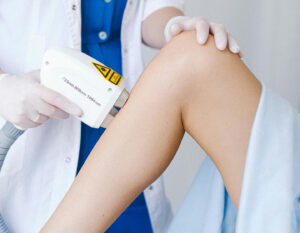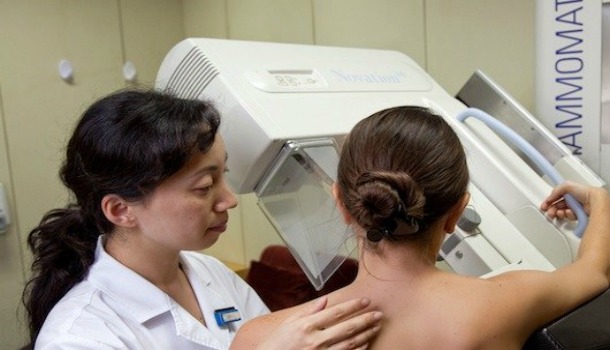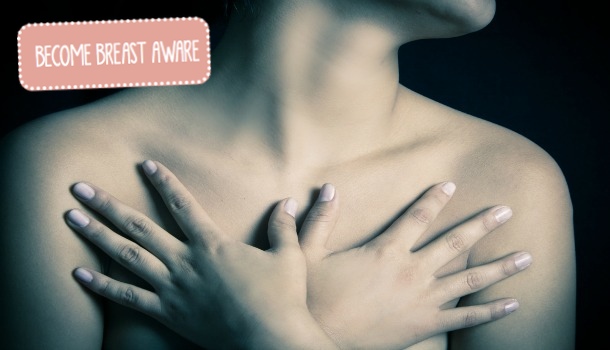
It probably hasn’t escaped you that October is Breast Cancer Awareness month… and nope we’re not trying to sell you anything or get you to part with your cash, but instead this is more a case of charity begins at home by YOU giving yourself a little time to become breast aware.
Too often we get caught up in the busy-ness of life that we forget to check ourselves. And although we know early detection saves lives…we still forget or put it on the backburner for another day. But it’s time to get breast aware…this is essential for all women aged 25 and above.
More than half of the women who are diagnosed with cancer are over 50, but there is an increasing trend of women being diagnosed at an earlier age, particularly during their late 30s or early 40s. All women should be breast aware.
So examine your breasts regularly (once a month and not around the time of your period as they can get lumpy)
What you’re looking for:
- Changes in your breasts which are not normal for you; something that you haven’t seen before.
- Changes to the nipple. Such as a change in shape, crusting, a sore or an ulcer, redness or inverting of the nipple.
- Discharge from the nipple. Particularly if this is from one nipple and is bloodstained, or occurs without squeezing.
What you’re feeling for:
- A lump, lumpiness or thickening. For younger women – if this is not related to your normal monthly cycle and remains after your period. For women of all ages – if this is a new change in one breast only.
- Persistent, unusual pain. If this is not related to your normal monthly cycle, remains after your period and occurs in one breast only.
If you want more info about how to do a good self-examine, Breastcancer.org has a really good 5 step guide, click here to read more.
And when you hit the BIG 4-0 it’s MAMMOGRAM time…
I, unfortunately, have entered this golden era and was reminded recently that women aged 40 and over should have mammograms yearly. Slightly freaked by the memory of my own Mum saying how painful it was, I decided to find out a bit more before taking the plunge.
Mammograms (breast x-ray screenings) can detect cancer early, often before it can be felt, when it’s small and easier to treat. They are recommended for women aged 40 but also for younger women in high risk groups (i.e. direct family history of breast cancer).
What happens during a mammogram?
An x-ray is taken of each breast at different angles. You will be asked to undress from the waist up. A cover-up or wrap will be provided for you.
A technician will be present to position your breasts and take the x-rays. You will stand in front of a special x-ray machine. One at a time, each breast will be placed onto a plastic platform and then pressed by another plastic plate as the x-rays are taken.
You will feel some pressure. Pressing your breast in this way helps spread out the breast tissue and prevents movement, helping to get a sharper image of the breast tissue.
These steps are then repeated to get a side view of each breast.
Next, your x-rays are examined to make sure the pictures don’t need to be retaken. At this point the technician is only making sure the pictures are sharp. The technician is not looking for results.
Is it painful?
The compression for each breast only lasts a few seconds — the overall procedure takes about 15 minutes. Most women feel uncomfortable, rather than pain, when their breasts are being pressed. Provided the compression plates are applied slowly and without too much pressure this should be relatively pain free.
Some women do find it painful, but the procedure is quick so the discomfort should only last a few seconds each time.
How to prepare for a mammogram
If your breasts are tender or swollen around the time of your period avoid this time for booking a mammogram.
On the day, your skin should be clean; do not wear deodorant, perfume, moisturiser, oil or powder as these will show up on your x-rays as white spots.
You are usually asked to undress from the waist up for a mammogram. Some women avoid wearing dresses on the day of mammogram as they prefer to remain clothed from the waist down.
And that’s it! Not so painful and definitely worth 15 minutes of your time. So now it’s over you, mama… start your very own Pink Revolution!
For more information on self-examination, screening and any other questions about breast cancer in Hong Kong, check out the Cancer Fund’s Pink Revolution website.
And make sure check out our amazing October Giveaway to be in with a chance of winning $24,000 worth of goodies plus for every entry you’ll be raising funds for the Hong Kong Cancer Fund too!
 View All
View All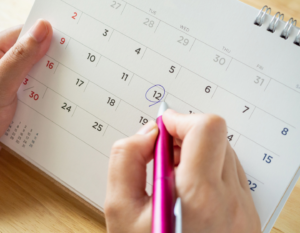



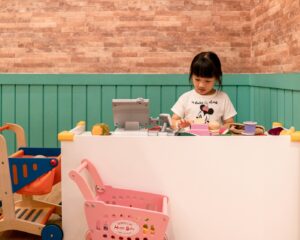






 View All
View All



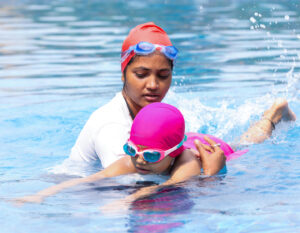
 View All
View All


 View All
View All

